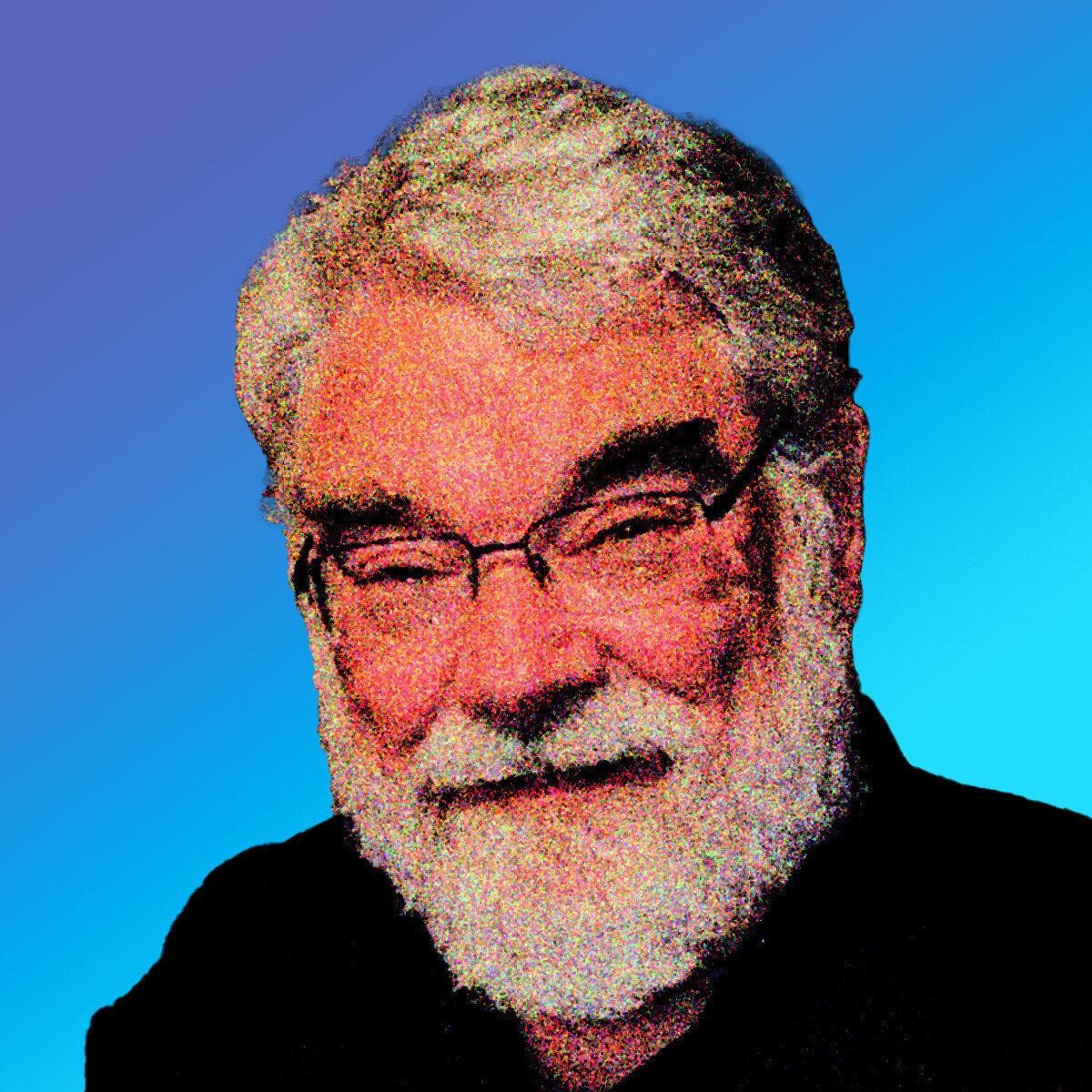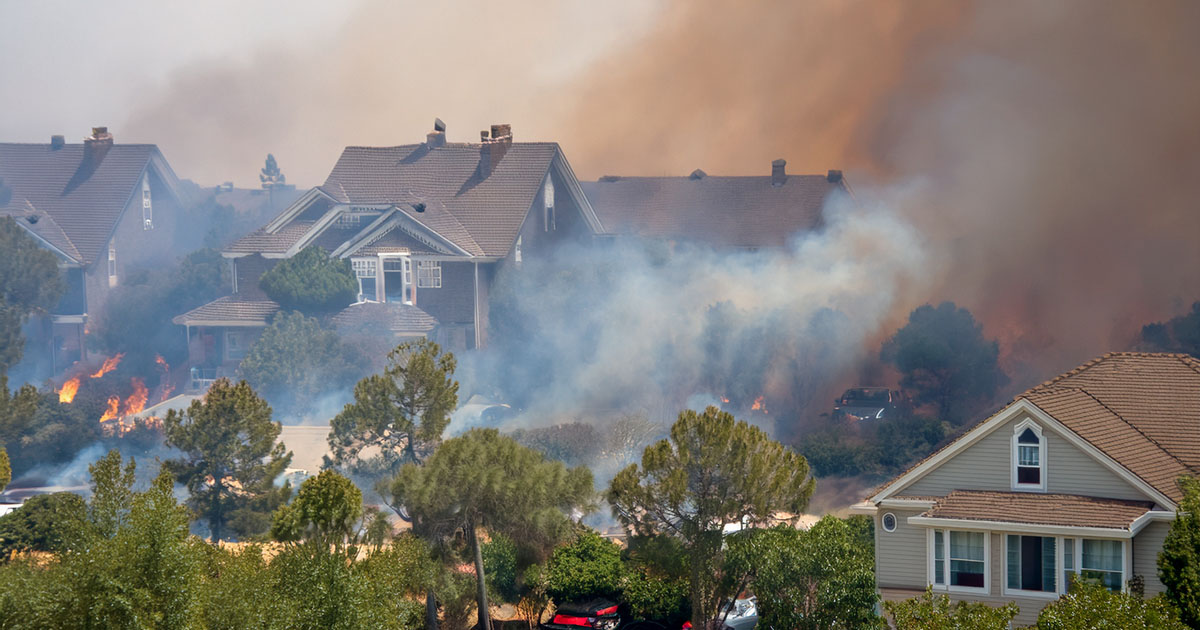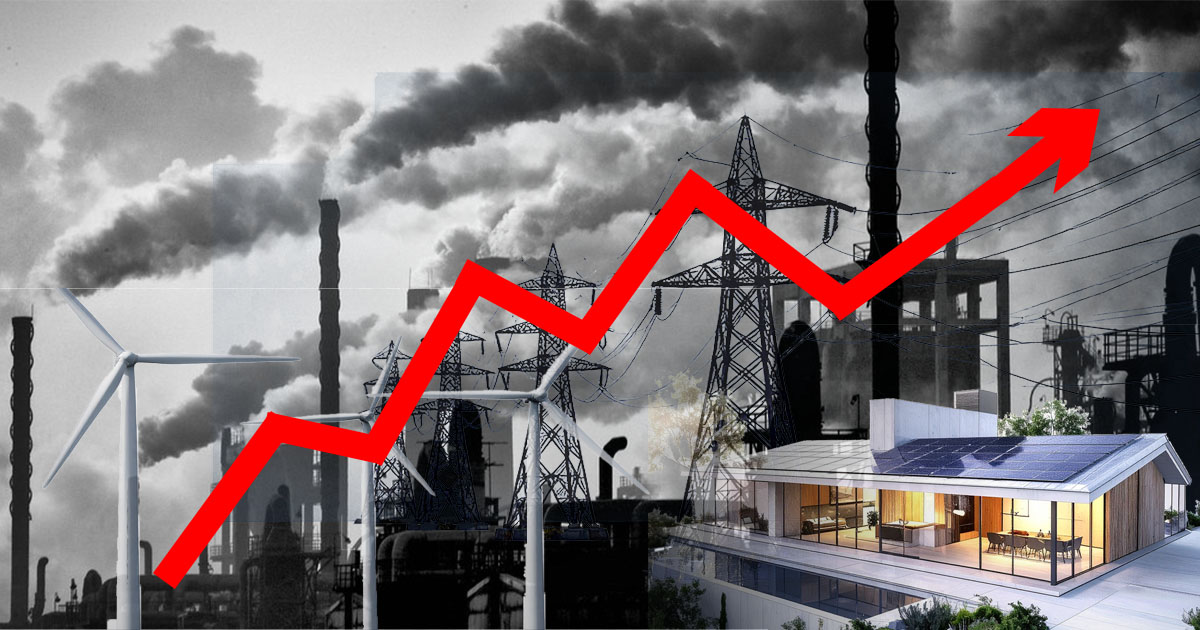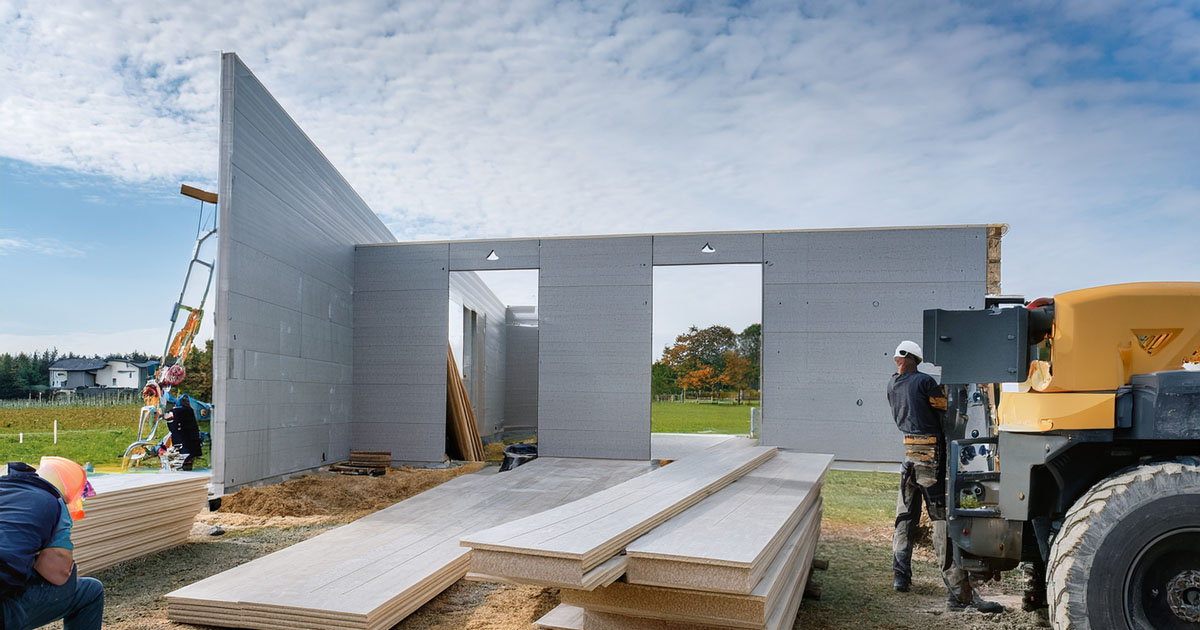Why Rising Energy Costs Make Smarter Housing a No-Brainer
What a recent Ezra Klein episode reveals about cost, permitting, and how to rebuild faster On a recent episode of The Ezra Klein Show, climate...
4 min read
 Timothy Lorang
:
Updated on July 7, 2025
Timothy Lorang
:
Updated on July 7, 2025

When a wildfire hits, most people worry about flames. But smoke is often both the immediate killer and the more pervasive, long-lasting threat—especially for families returning to homes they thought were spared.
In the New York Times investigation “Toxic Homes” (June 2025), reporters revealed that many houses left standing after the LA-area wildfires were so contaminated by smoke, soot, and chemical residue that they were declared unsafe to inhabit. Clothes were laced with lead. Air samples detected formaldehyde, cyanide, and benzene. A toddler’s car seat tested positive for cyanide weeks after the fire.
These weren’t destroyed homes. These were homes that looked “lucky” but were often left with even more difficult mitigation work to do than rebuilding.
When a wildfire tears through a region, it doesn’t stop at the fireline. The smoke travels for miles, carrying toxic compounds released when modern materials—plastics, synthetics, electronics—burn. Wildfire smoke contains:
According to the EPA, fine particles from wildfire smoke pose serious health risks—especially for children, older adults, and people with heart or lung conditions.
The EPA defines air quality using PM2.5 concentration ranges that correspond to specific health risk categories—from “Good” to “Hazardous.” The chart below shows the current 2024 PM2.5 thresholds, as published in the EPA AQI Breakpoints Table and official fact sheet (PDF).

The New York Times article documented how even homes well outside the official burn zone were filled with these pollutants. Insurance companies often tested only for surface soot and ash. But independent environmental hygienists documented contamination inside HVAC systems, drywall, and furniture.
The cost of remediation? Often hundreds of thousands of dollars. The human cost? Lingering health effects, displacement, and financial stress.
But what if there were a way to prevent smoke from entering the home in the first place?
Enter the Passive House standard.
Originally developed to conserve energy and maximize comfort, Passive House (or Passivhaus, from its German roots) has become one of the most effective building approaches for keeping outdoor pollution—including wildfire smoke—out of the home.
A Passive House is designed to be extremely airtight—often up to 10 times tighter than a conventional new home. Gaps around windows, electrical outlets, vents, and framing are meticulously sealed. During construction, a blower door test ensures the building meets strict air leakage thresholds—no more than 0.6 air changes per hour at 50 pascals (ACH50), while current codes often allow up to 5 air changes.
What does a tight envelope mean during a wildfire? It means unfiltered outside air isn’t seeping in through walls, roofs, attics, or crawl spaces. Even when outside air is full of smoke and fine particulates, the home stays sealed.
During the 2020 Oregon wildfires, Passive House residents reported that their homes remained smoke-free—even when outdoor Air Quality Index (AQI) levels exceeded 500 (hazardous). Conventional homes in the same neighborhoods saw indoor smoke levels rise dramatically.
— Green Hammer: Healthy Homes in Wildfire Season
Passive Houses include a sophisticated mechanical ventilation system—typically a heat recovery ventilator (HRV) or energy recovery ventilator (ERV)—to bring in filtered fresh air while exhausting stale, contaminated indoor air. These systems are required and carefully specified as part of Passive House certification through the Passive House Institute (iPHA).
Passive House Designers use tools like the Passive House Planning Package (PHPP) to assess performance requirements and determine the most effective ways of balancing building envelope ventilation systems with budgets.
These ERV & HRV systems use high-efficiency filters, often rated MERV 13 or higher (MERV = Minimum Efficiency Reporting Value), to capture fine airborne particles. Some models also include activated carbon to reduce VOCs and odors.
According to the Passive House California report on wildfire smoke, maintaining airtightness combined with controlled filtration is crucial for protecting indoor air quality during smoke events. In fact, during the 2002 California fire events, several Passive House owners found that temporarily using MERV-16 or HEPA (High-Efficiency Particulate Air) filters in their ERV & HRV systems was very effective in achieving satisfactory indoor air quality and particulate levels during intense smoke events. In everyday non-smoke situations, however, a MERV-13 filter is still an efficient approach
In most homes, ventilation means opening a window—even when the outside air is full of smoke. In a Passive House, windows can remain closed, and occupants still receive a constant supply of clean, filtered air. This makes them ideal for shelter-in-place scenarios.
In a conventional house:
In a Passive House:
Bottom line: When a wildfire hits, a Passive House is not just energy-efficient—it’s a safe haven.
Even if smoke doesn’t get in, what happens if the house itself burns?
This is where material choice becomes essential—and where the blog Fireproofing with MgO Panels in the Wildfire Resilient Homes series will take us: into the world of fire-resistant construction materials, like magnesium oxide (MgO) panels.
It’s about being able to come back home—and know that the air you’re breathing is safe. That your children’s clothes aren’t contaminated. That your HVAC system isn’t filled with carcinogenic soot.
In wildfire-prone regions, resilience means building homes that don’t ignite easily, and also don’t let the smoke in.
Passive House design delivers on that second promise—with tested, proven results in real fire events across California, Oregon, and Colorado.
At Simplus Systems, we believe that homes should be more than just shelter—they should be sanctuaries, even in the face of disaster.
That’s why we’re committed to building high-performance homes that meet or exceed Passive House standards—and using materials like MgO structural panels that resist fire, mold, and smoke damage.
We’re not just designing and building for energy efficiency. We’re creating better living environments for the new normal: longer fire seasons, more smoke events, and families who want healthier homes and peace of mind.
To learn more about how Simplus Systems is building wildfire-resilient homes, contact us here.
Image adapted from: Passivhaus Institut, Germany. Originally published at www.passiv.de. Used under public license via Wikimedia Commons.

What a recent Ezra Klein episode reveals about cost, permitting, and how to rebuild faster On a recent episode of The Ezra Klein Show, climate...

Wildfires don’t just destroy homes—they upend entire communities. From Paradise to Lahaina to Los Angeles, fire survivors face years of delays, red...

When a wildfire hits, most people worry about flames. But smoke is often both the immediate killer and the more pervasive, long-lasting...